Andy Warhol collides with William Morris in a typically radical new show from artist Jeremy Deller
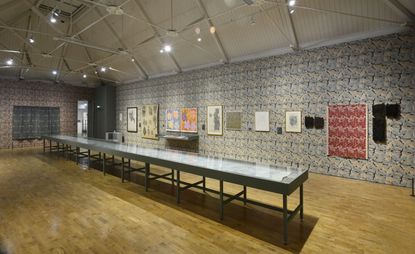
Picture old William Morris, grave and bearded, wearing the floppy white wig of Andy Warhol, or a pair of his trademark Miltzen sunglasses. It's an image of the sort that could have come out of Warhol's Factory, the mythical Manhattan space in which he collaborated with his coterie of artists and celebrity muses and where he crafted his legendary silkscreens.
The image doesn't exist, of course, but it symbolises the juxtaposition Jeremy Deller, another artistic prankster, wishes to highlight in 'Love is Enough', the newly opened exhibition he's curated at Modern Art Oxford.
In plucking rarely-seen works by Morris and Warhol, Deller has drawn comparisons between the two luminaries, despite the nearly 100-year gap between their careers. Both led significant artistic movements during which they collaborated with close-knit groups of artists, living communally for long stretches (both rejected the capitalistic styles of their day). And both were wildly successful in their time, widely imitated by some yet misunderstood by others.
Deller, a collaborator extraordinaire and Turner Prize-winner who began his career with a summer 'internship' at the Factory, has set them up in parallel over the dedicated space in Oxford. There are Morris' engravings, wallpapers and booklets, products of the artist's innovations in printing and distribution in the early years of mass production - and initiatives to get art into the hands of the middle classes.
On the other side is a photograph of Warhol holding a giant acetate from his famous Marilyn series of silkscreens, along with a 1985 Joan Collins, at the height of her Dynasty fame - critiques of the 20th-century culture of mass manufacturing. Warhol's 1970 'Flowers' screen print, albeit tenuously linked to Morris's floral-repeat textiles, is nonetheless evidence of the artist's commitment to the long tradition of floral painting.
In one room, segments of Morris tapestry featuring the Arthurian knights Sirs Galahad, Bors and Percival spying the Holy Grail demonstrates his attention to traditional craft and detail. It looks across to a rare 1968 Warhol tapestry of Marilyn Monroe, meticulously hand-produced by artists at the Charles E Slatkin Galleries, and displayed here for the first time in a public museum. The suggestion is that Warhol's (still strong) brand is a natural continuation of the brand Morris established in the late 19th century.
Deller famously said, 'I don't make things, I make things happen.' Yet to celebrate the launch of 'Love is Enough', he did right by his fans. For our December issue (see W*189) he designed our limited edition cover - available to subscribers - with Fraser Muggeridge studio, combining Frederick Holler's 1884 photograph of William Morris with a Warhol-inspired camouflage (its strapline, 'Get mumbo-jumbo out of the world', is based on Morris' dying words). He's also produced a limited edition artwork, hand printed on four different neon papers at Morris' famous Kelmscott Press. Until 31 December 2014, Wallpaper* is offering 50 copies to readers, at a discount price of £75. To secure a print, contact Modern Art Oxford.
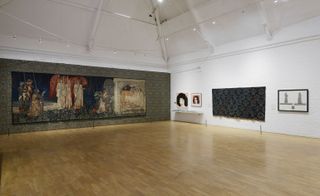
Curated by artist Jeremy Deller, the show brings together the work of William Morris and Andy Warhol. In plucking rarely-seen works by Morris and Warhol, Deller has drawn comparisons between the two luminaries, despite the nearly 100-year gap between their careers. © Modern Art Oxford.
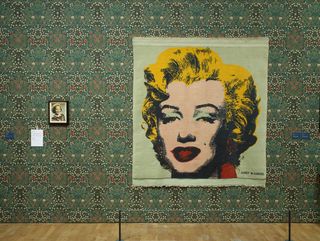
One of the strangest objects in the exhibition is the signed photo of a young Shirley Temple (left), sent to a rather sickly Warhol in 1941. It hangs juxtaposed with a rare 1968 Warhol tapestry of Marilyn Monroe, meticulously hand-produced by artists at the Charles E Slatkin Galleries, and displayed here for the first time in a public museum. © Modern Art Oxford.
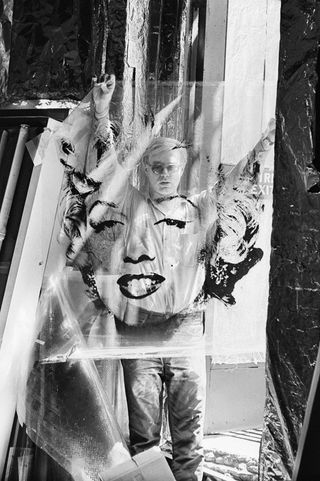
Warhol in 1964 holding the 'Marilyn' acetate used to make his famous 40” paintings, known as the 'Shot Marilyns', at the doorway of the fire escape at the Factory on East 47th Street.
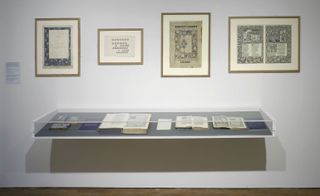
There are Morris' engravings, wallpapers and booklets, products of the artist's innovations in printing and distribution in the early years of mass production - and initiatives to get art into the hands of the middle classes. © Modern Art Oxford.

‘How I Became a Socialist’ (K599), by William Morris, published by the 20th Century Press, bound copy, undated.

'Brass rubbing from Great Coxwell Church (KM305)', by William Morris, undated.
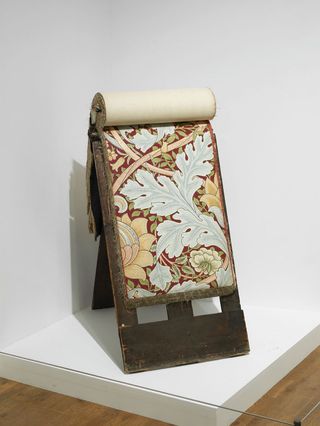
Morris & Co's 'Stand Book' from its Hanover Square showroom. Courtesy of Morris & Co. © Modern Art Oxford.

Warhol's 1970 'Flowers' screen print, albeit tenuously linked to Morris's floral-repeat textiles, is evidence of the artist's commitment to the long tradition of floral painting.
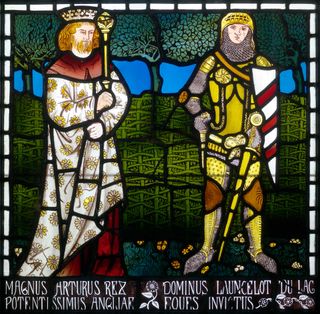
'The Story of Tristram and Isoude', by Morris, Marshall, Faulkner & Co, 1862. Panel 13, named 'King Arthur and Lancelot', designed by William Morris.
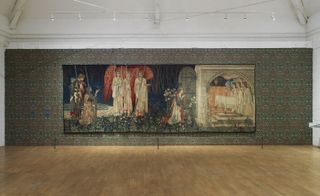
In one room, segments of Morris tapestry featuring the Arthurian knights Sirs Galahad, Bors and Percival spying the Holy Grail demonstrates his attention to traditional craft and detail. © Modern Art Oxford.
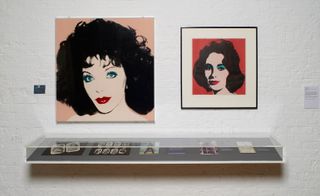
On the other side is a 1985 Joan Collins (left), at the height of her Dynasty fame, paired with a portrait of Dame Elizabeth Taylor - critiques of the 20th-century culture of mass manufacturing. © Modern Art Oxford.
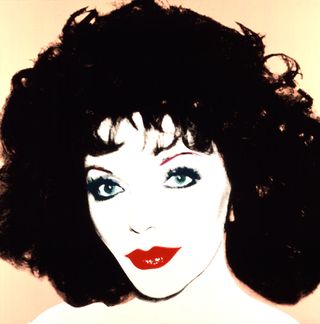
'Joan Collins', by Andy Warhol, 1985.

For our December issue (see W*189), Deller designed our limited edition cover - available to subscribers - with Fraser Muggeridge studio, combining Holler's 1884 photograph of Morris with a Warhol-inspired camouflage (its strapline, 'Get mumbo-jumbo out of the world', is based on Morris' dying words)
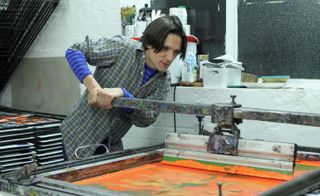
3925608265001
Deller's also produced a limited edition artwork, hand printed on four different neon papers at Morris' famous Kelmscott Press. Watch our film to take a peek behind the scenes of the production process

'Love is Enough' pattern, by Jeremy Deller and Fraser Muggeridge studio, 2014.
ADDRESS
Modern Art Oxford
30 Pembroke St
Oxford OX1 1BP
Wallpaper* Newsletter
Receive our daily digest of inspiration, escapism and design stories from around the world direct to your inbox
-
 Ikea introduces its first gaming furniture collection
Ikea introduces its first gaming furniture collectionBrännboll is the first Ikea gaming furniture collection, unveiled during Milan Design Week 2024 and designed to swiftly transform a domestic space into a gamer’s paradise
By Jasper Spires Published
-
 Morgan take their classic roadster and give it subtle but significant tweaks for 2024
Morgan take their classic roadster and give it subtle but significant tweaks for 2024New details and features give the compulsive Morgan Plus Four an even more pared back silhouette and driving ability
By Jonathan Bell Published
-
 Wallpaper* Class of '24 exhibition now open at Triennale Milano
Wallpaper* Class of '24 exhibition now open at Triennale MilanoWallpaper* Class of '24 exhibition at Triennale spotlights international emerging talent in furniture and product design, with the support of AHEC and SNOW (until 21 April 2024)
By Rosa Bertoli Published
-
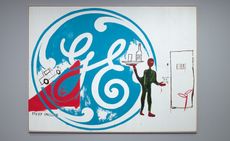 Jean-Michel Basquiat and Andy Warhol’s fruitful partnership explored in Paris
Jean-Michel Basquiat and Andy Warhol’s fruitful partnership explored in ParisFondation Louis Vuitton presents ‘Basquiat x Warhol. Painting 4 Hands’, exploring the collaboration between the two artists
By Hannah Silver Last updated
-
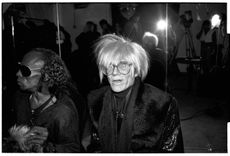 The Andy Warhol Diaries on Netflix reveals his enduring impact on contemporary art
The Andy Warhol Diaries on Netflix reveals his enduring impact on contemporary artWe review the new documentary, and showcase Warhol’s impact on modern culture through three artists: Deborah Kass, Jeff Koons and Glenn Ligon
By Harriet Lloyd-Smith Published
-
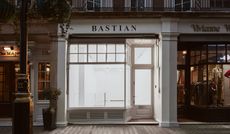 David Chipperfield Architects completes new Mayfair art gallery
David Chipperfield Architects completes new Mayfair art galleryBerlin-based Bastian inaugurates its first international outpost with an exhibition of Andy Warhol’s Polaroids
By Jessica Klingelfuss Last updated
-
 Over 100,000 unseen Andy Warhol photographs to be made public
Over 100,000 unseen Andy Warhol photographs to be made publicBy Jessica Klingelfuss Last updated
-
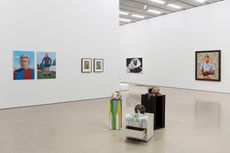 The art of the beautiful game: football moves off pitch and into the museum
The art of the beautiful game: football moves off pitch and into the museumBy Nurit Chinn Last updated
-
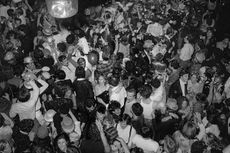 Ian Schrager lifts the curtain on the bacchanal Studio 54 years
Ian Schrager lifts the curtain on the bacchanal Studio 54 yearsBy Elly Parsons Published
-
Pen pals: Andy Warhol's personal letters find a new lease of life as art
By Aaron Peasley Last updated
-
 Helping hand: Luxembourg & Dayan explores the role of the artist’s assistant
Helping hand: Luxembourg & Dayan explores the role of the artist’s assistantBy Brook Mason Last updated
